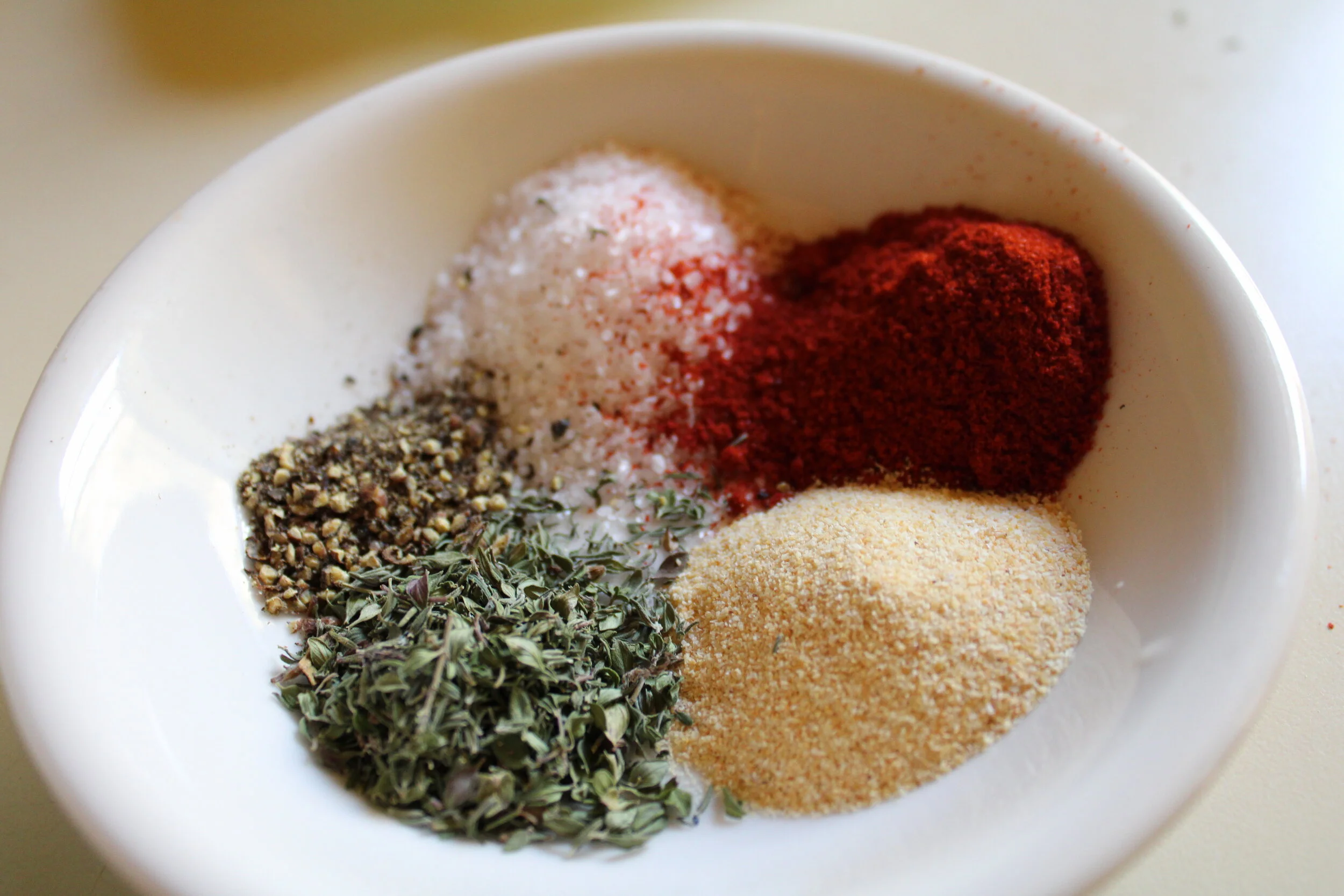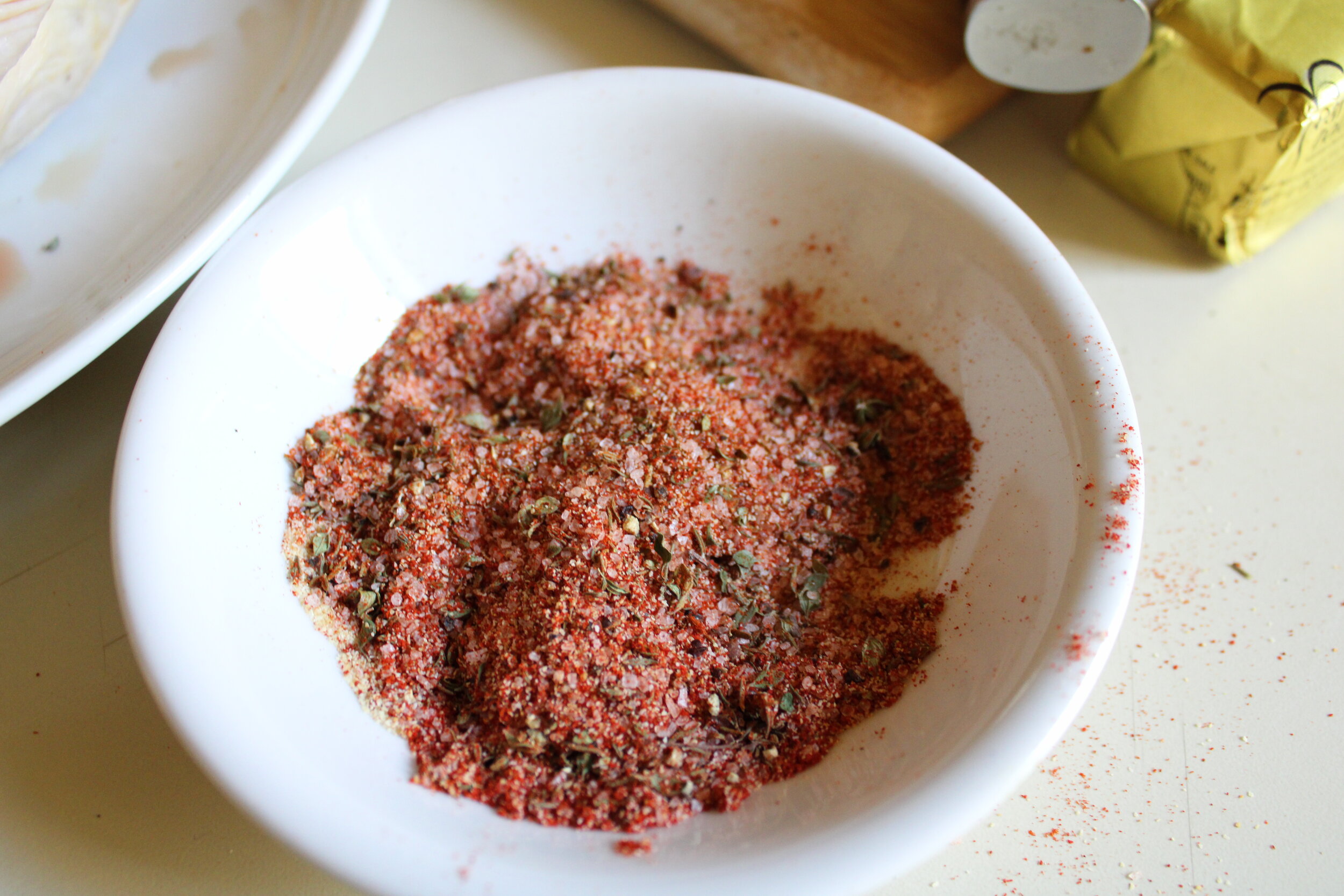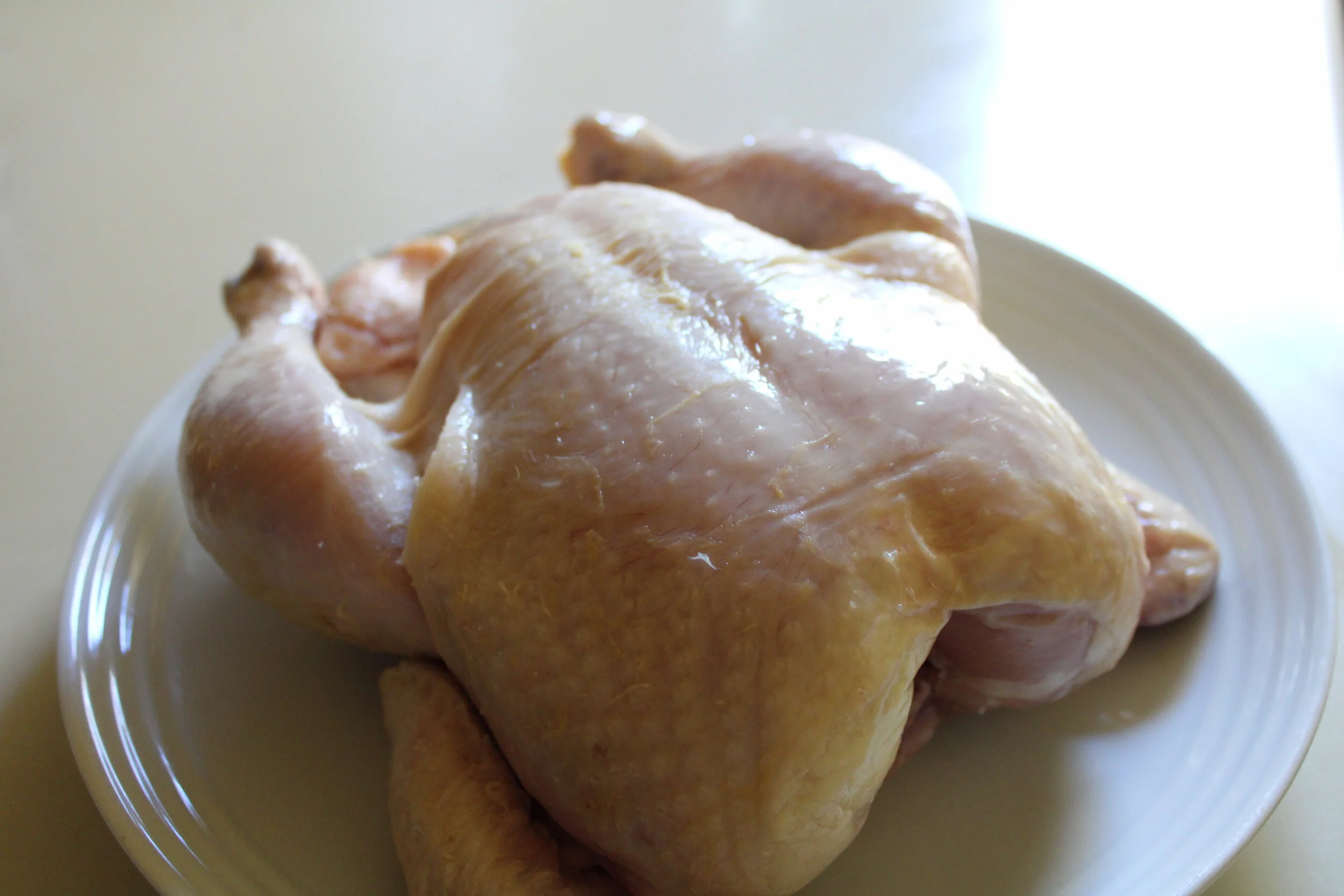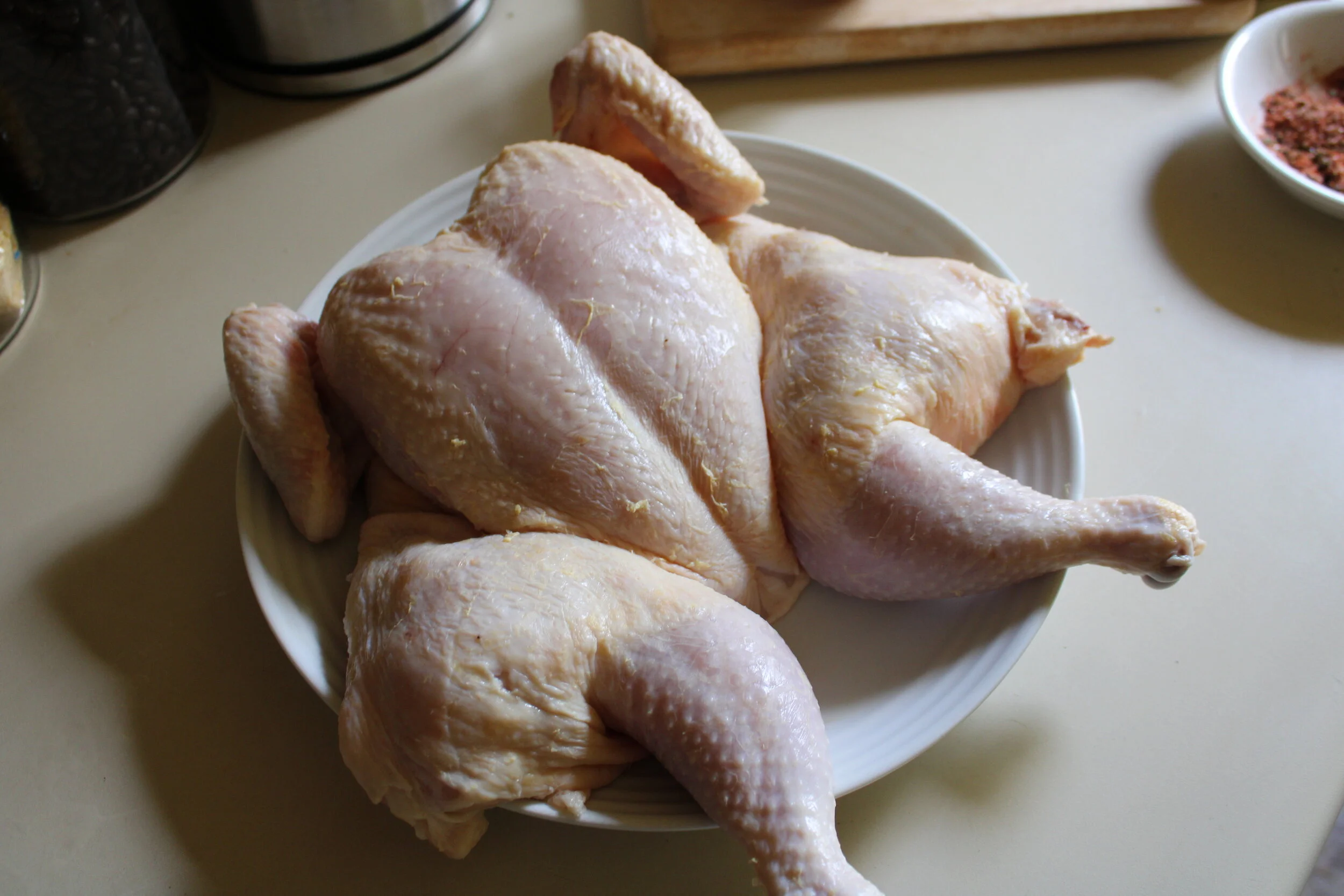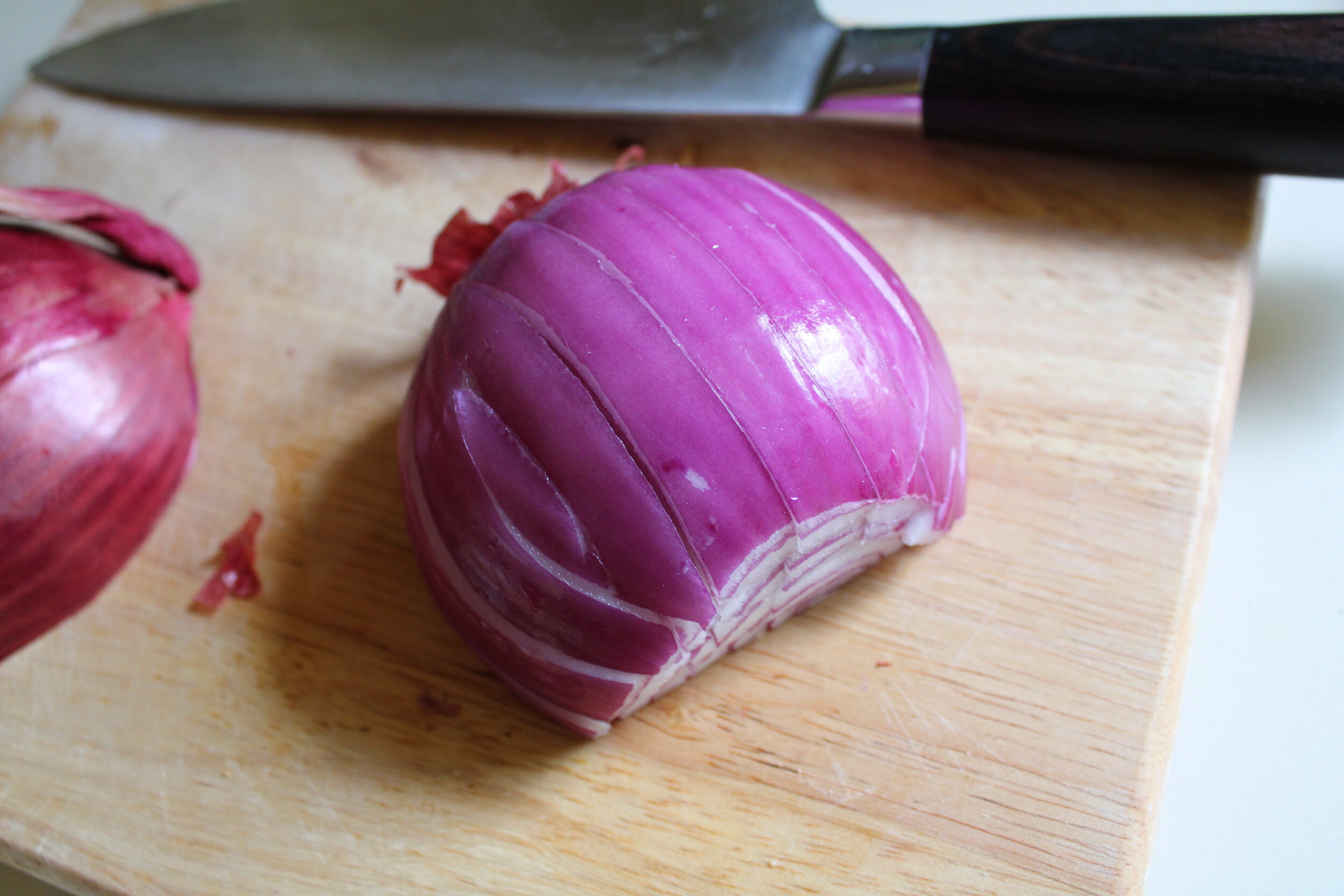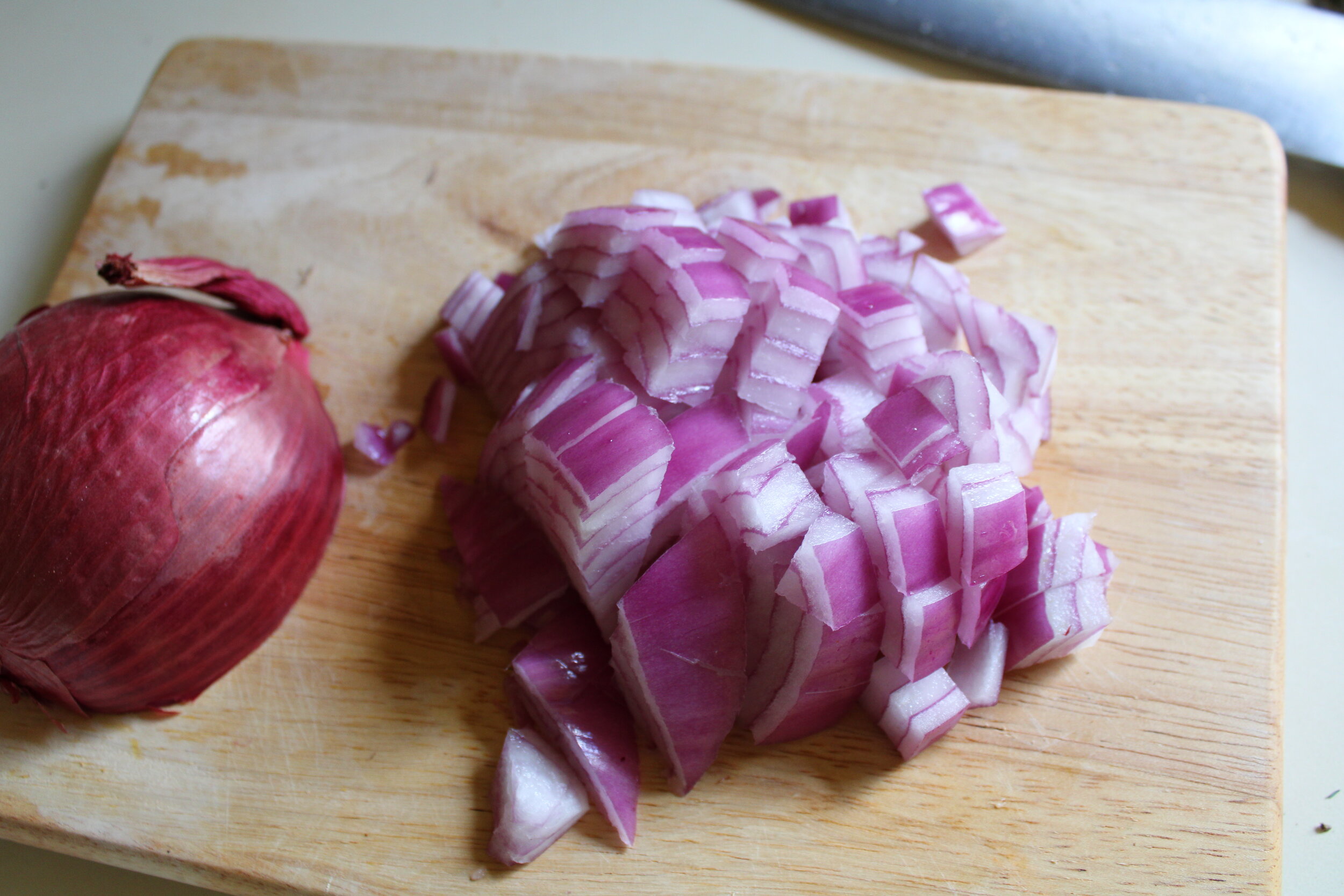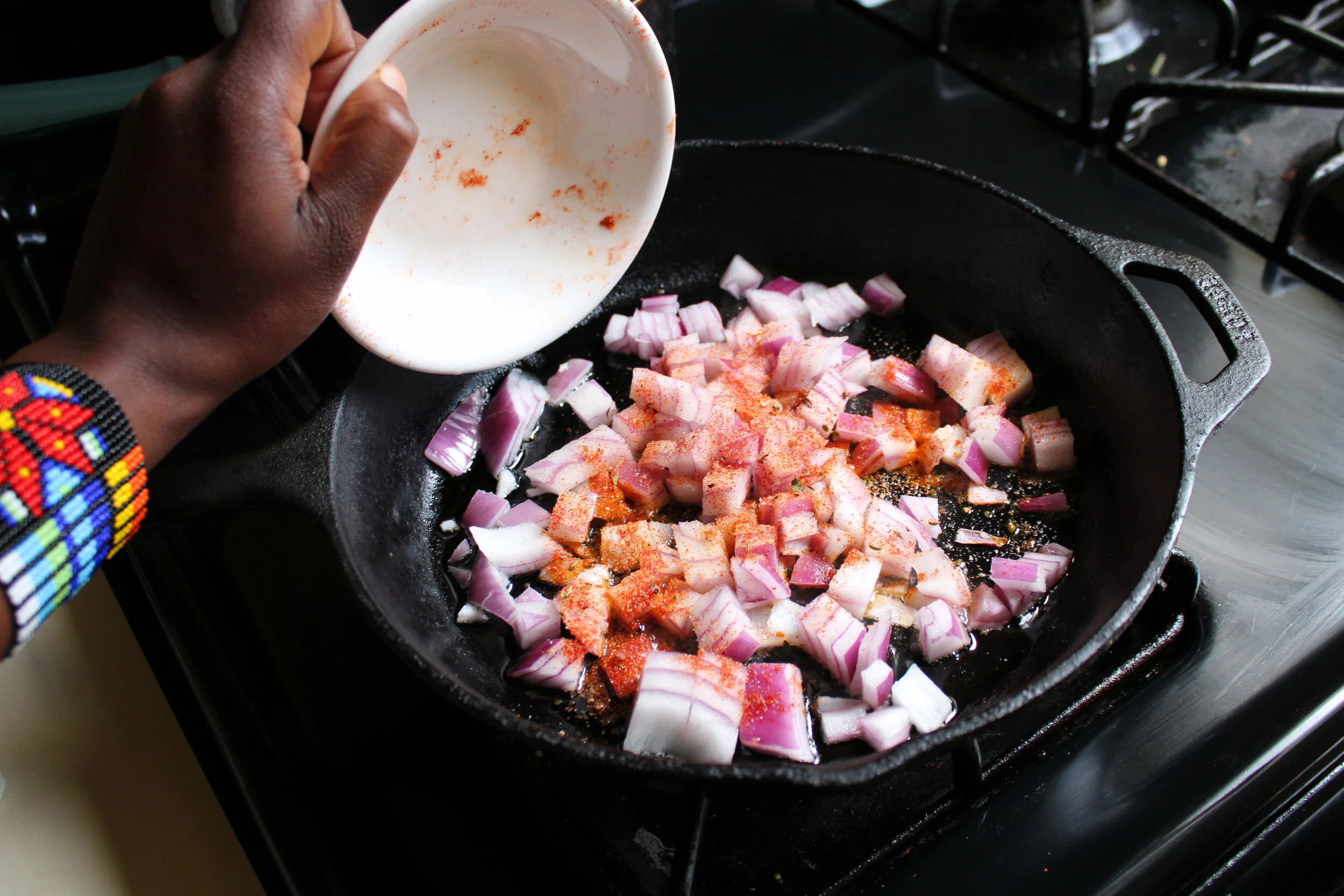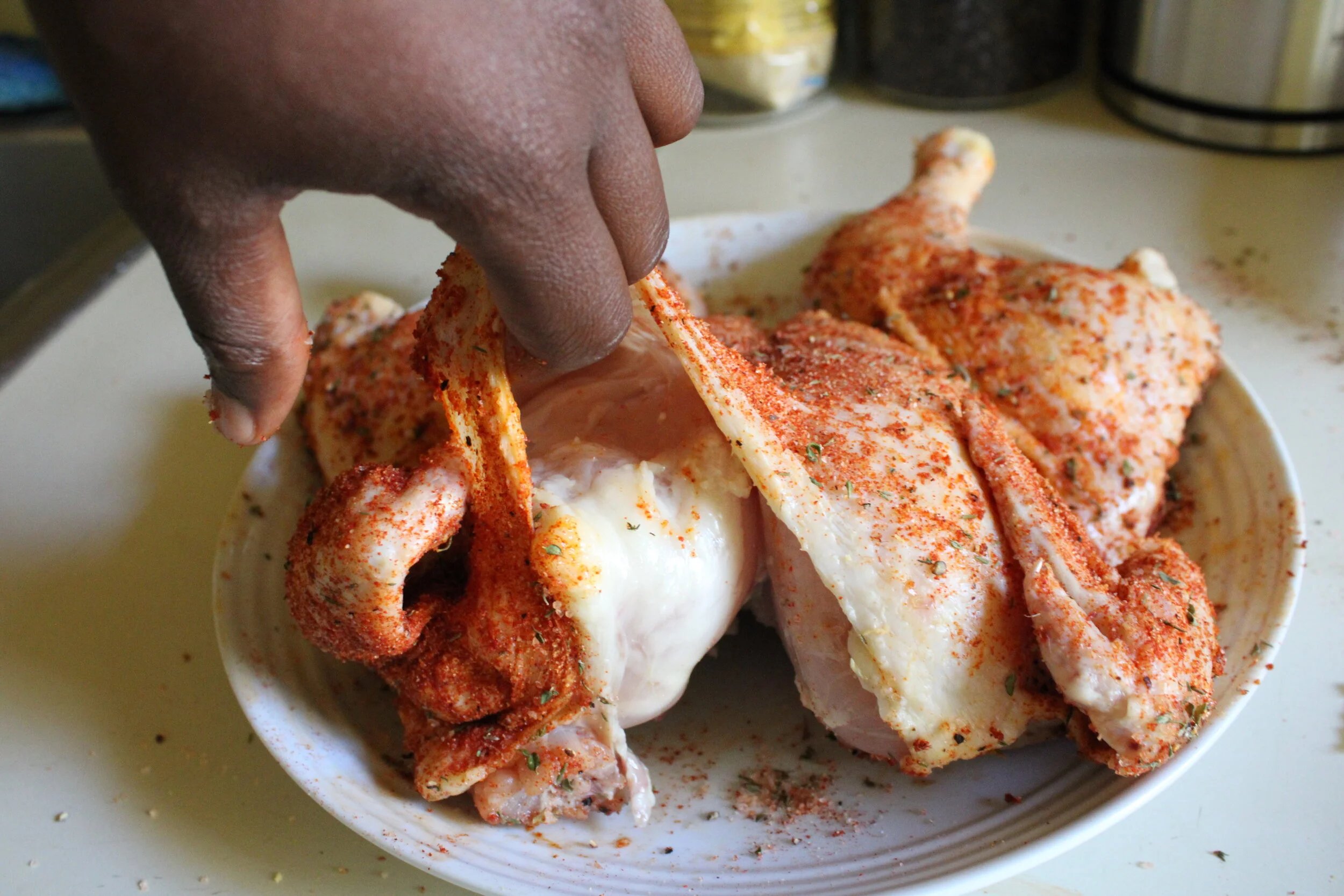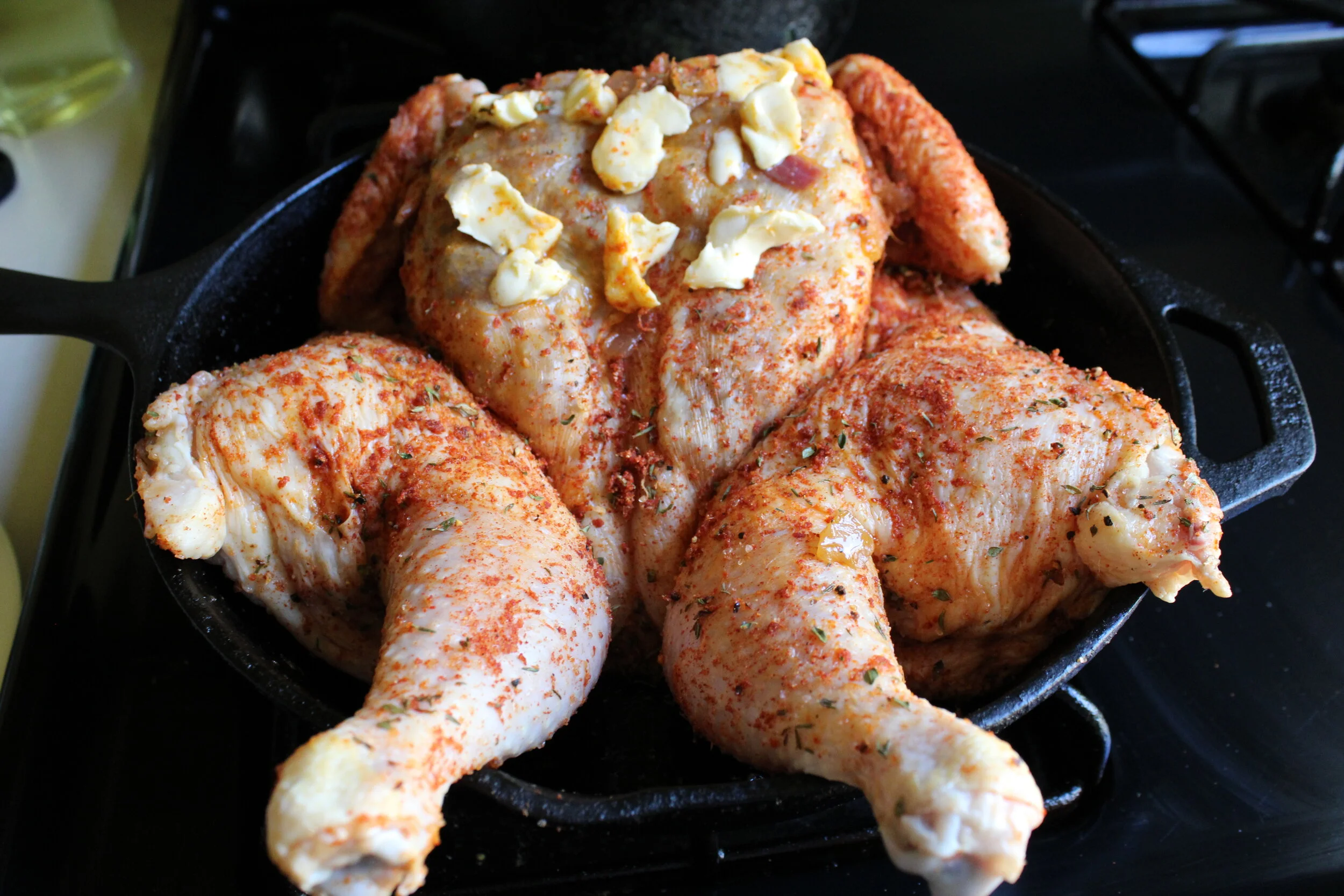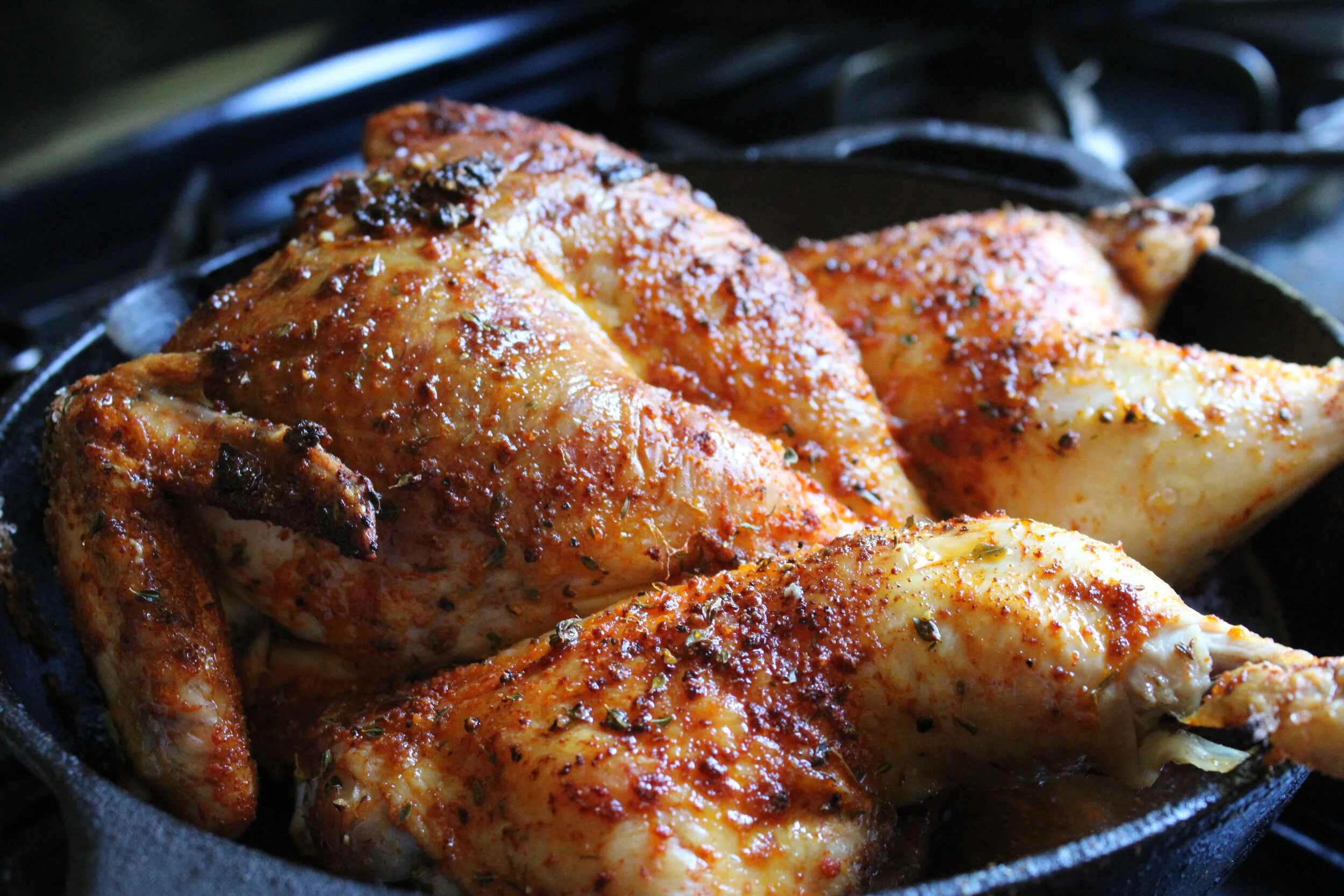Chapter 1. Roast Chicken
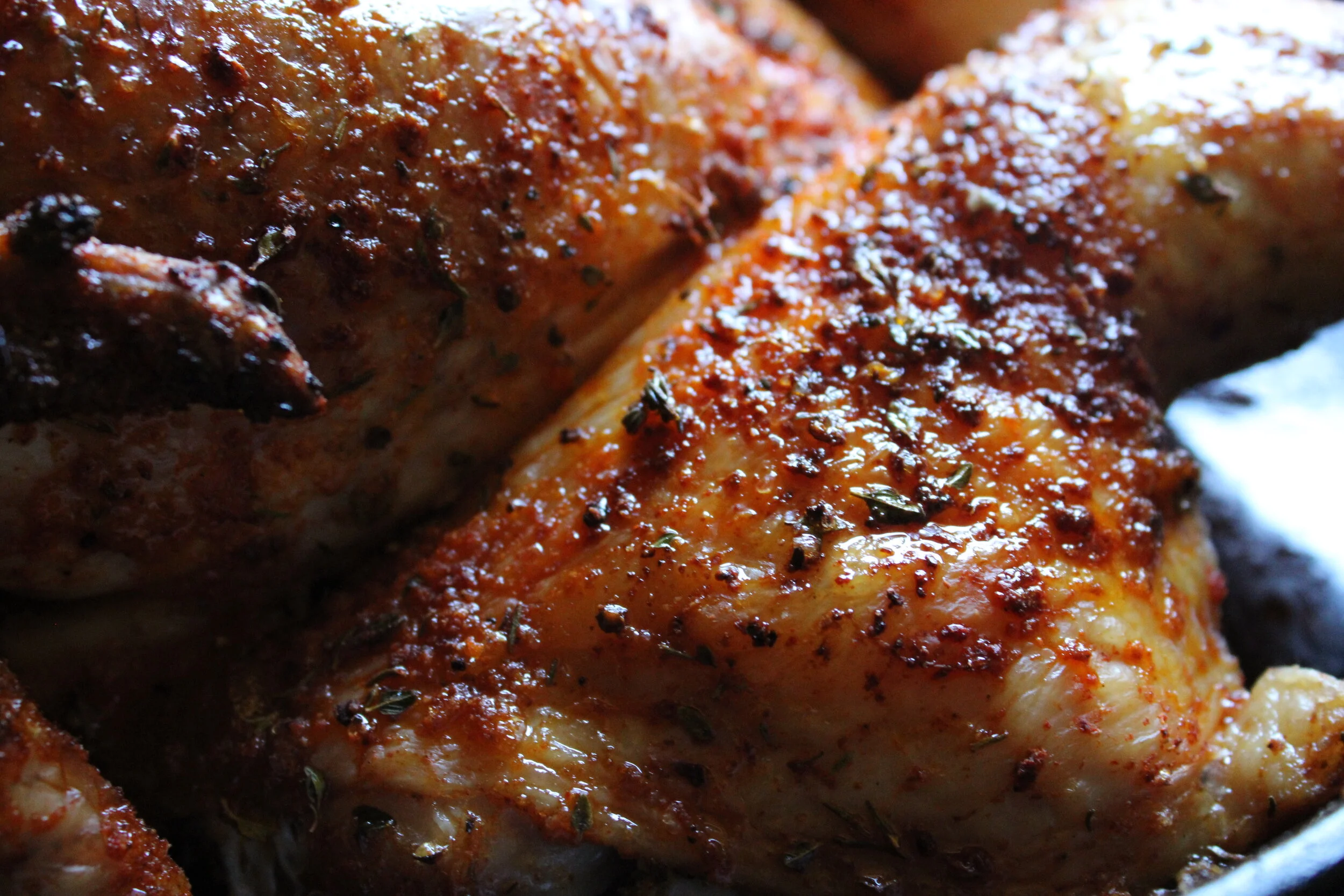
Chicken is a significant ingredient in my food culture because growing up in a large family it was central to many of the meals we shared including sunday meals and holidays. In fact, my family didn’t give a hoot about turkey, but every Christmas and Thanksgiving and Easter we had two roast chickens along with a ham or pork shoulder.
Holidays and weekend meals aside, chicken was (unfortunately) cheap, traditional, and something my mom could spin in a variety of ways. Roasted chicken was often the base of many of the dishes she created when it wasn’t the centerpiece: Roast chicken quarters before putting on BarBQ sauce, roast chicken for slippery dumpling soup, roast chicken bones for broth.
Roast chicken was also one of those dishes that my mom didn’t seem to use a recipe for, so I learned how to prepare it by being in the kitchen with her from my toddler years into my teens. Sometimes I’d be working on the bird, sometimes I’d be watching her while I worked on other dishes.
These days, with her process in my mind, I can feel my body moving alongside hers whenever I work with a whole chicken:
Clean with water and vinegar.*
Mix your spices and season bird with spices.
Stuff the breast with gently cooked mirepoix and butter.
Place in the oven and baste the bird from time to time until it’s fully cooked and golden.
Because chicken roasting wasn’t as recipe centered as making cornbread and other dishes, the process left more room for informal conversation about things that were important to my mom and me. It was a time for me to learn about the politics of dealing with difficult in-laws or stories of romance and loss, or to problem solve things that were stressing me out. Therefore, like many cooking moments with my mom, chicken roasting was a means of transferring a lot of information to my young head, most of it not related to the dish being made, but more about establishing a bond of trust and adoration.
Given that background it might make sense that I get an intense amount of comfort from eating roast chicken. However, I only realized this a few years ago when I resumed studying for a second degree and working, both full-time. At some point during this period I started buying a whole roast chicken at the end of each week with the intention of breaking the chicken down to use for lunch throughout the week.
However . . . as soon as I got home, I’d open that package of rotisserie chicken and within 45 minutes or less . . . I’d eaten the whole thing. Starting with the wings, then a little piece of the breast, then both of them, and then the thighs, and then the oysters and the back. With each motion of separating the hot flesh from bone, I became more immersed in a visceral memory of being nurtured and fed.
The process of breaking apart a chicken and eating it while still hot, was so comforting for me during that time, especially after a week of barely eating anything because I was too busy and too anxious. Clearly I was famished on multiple levels, and desperately needed to indulge in a time when I was taken care of. These days roast chicken still serves that purpose of comforting me, although I try not to wait so long to feed myself.
THE RECEIPT — Sunday Roast Chicken
Ingredients:
1 whole 4# Chicken
1-2 tbsps. Salt
1 tsp. Black Peppercorns Ground (freshly ground or pre-ground is great)
1 tbsp. Dried Thyme (I usually pick a ton of fresh thyme throughout the summer and let it dry for those months on my counter to use in the fall/winter/spring. I also have store-bought jarred herbs too. We’re not trying to push a rude Barefoot Contessa agenda out here so use what you have/like)
1 tbsp. Granulated Garlic (I emphasize granulated garlic as opposed to powdered garlic, because I think powdered garlic has a mustiness that I don’t want in this spice mix. Granulated garlic is cyrstal-like and sweet and helps give the chicken a consistent golden caramelization)
2 tbsp. Paprika (any type [hungarian, regular, smoked, etc] so long as it’s not expired, otherwise it just tastes like red powder. Paprika is supposed to taste and smell like a dried sweet pepper, expired paprika won’t and is great for dyeing things, but not seasoning foods)
½ medium Red Onion, diced small
¼ cup Canola or Olive Oil
2 tbsp. Vegan Butter (oh the irony of vegan butter on a chicken. I just think it’s odd to put cow’s milk on a chicken, but again, if that’s what you have/are into go for it, the point of this ingredient is to help the skin get crispy)
Step to It:
Clean chicken as you see fit, either not at all, with just a little water rinse, or a full gamut of vinegar/lemon-water soaking and clipping of fat and feathers.
Once chicken is clean (or not?), pat it dry with paper towels or a clean cloth to absorb any excess water so that the skin will get crispy later. You can go as far as leaving the chicken out for 30 minutes or so to dry out the skin even more.
Using sturdy kitchen scissors, spatchcock the chicken and place on a large plate.
In a small bowl mix together spices. Sprinkle ¾ of this spice mix over the chicken and rub into and under the skin. Set aside to marinate for 15-20 minutes if you’re in a rush and up to 8 hours if you have time.
Heat a large cast iron skillet with 2 tbsps. of canola oil on medium heat. Add in onions and season with remainder of spice mix. Cook onions to sweat them so that they are just starting to become translucent and slightly tender, about 5-8 minutes. Remove onions from pan and allow to cool completely on a plate about 10 minutes.
Using your fingers, gently separate the skin of the breasts from the meat, being sure to not tear the skin so that you have a large cavity for inserting your onions. Once onions are cooled scooch them into the cavity between the meat and the skin.
Move the chicken to your previously used cast iron skillet with the skin facing up and situating the chicken so most parts of the meat are touching the base of the pan. Place a few pats of butter on the breasts and drizzle the entire chicken with the remaining oil.
Bake chicken on 350F for 40 minutes, then increase heat to 400F and roast for about 20-30 minutes longer until the skin is crispy and the breast meat registers at least 145F and the thigh meat 165F, or the juices run clear if you poke into the meat with a small knife.
Allow chicken to rest, or if you’re like me eat half of it immediately after you’ve taken photos and stop eating only after you’ve realized this is your lunch for the weekend and you will have no other chance to cook until Monday evening. . .
salt, smoked paprika, garlic powder, thyme, and black pepper
Chicken spatch-cocked.
Get the spices underneath the chicken on that thigh and rib meat too.
Cook onions to be just tender and translucent.
Stuff cooled onions into chicken breast cavities.
Butter is optional, but do give it a drizzle of oil to help with crispness.
~80-90 minutes later
* The USDA advises people to not clean chicken, and I totally hear where they’re coming from, totally. But . . . I clean my chicken as my ancestors have been for years. Sometimes with vinegar or lemon juice, most of the times just water, but I clean it. I also wash and sanitize my counters, tools, and sink during and after cooking anything, especially meat.
Do I judge people who don’t clean their chicken because they’re afraid juices will splatter on surfaces they should be cleaning daily anyways? . . . .
This. Is. A judgement free zone.
